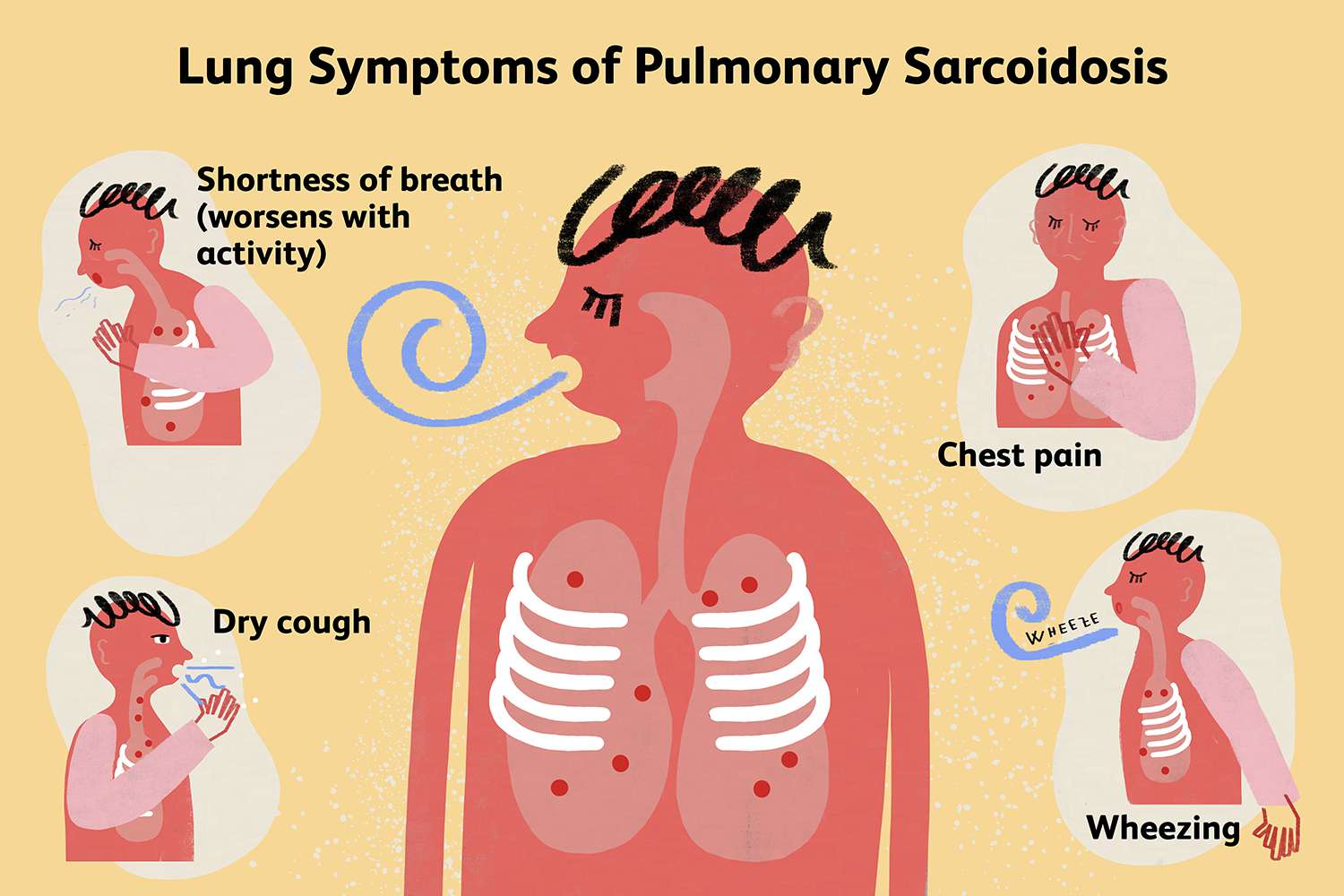
What is Sarcoidosis? Sarcoidosis is a rare inflammatory disease that causes tiny clumps of inflammatory cells, called granulomas, to form in various organs. These granulomas can affect any part of the body but most commonly impact the lungs, lymph nodes, eyes, and skin. What causes Sarcoidosis? The exact cause remains unknown, but researchers believe it might be linked to an overactive immune response to an unknown substance. Who gets Sarcoidosis? Anyone can develop this condition, though it often affects adults between 20 and 40 years old. How is Sarcoidosis diagnosed? Doctors typically use a combination of medical history, physical exams, imaging tests, and biopsies. Is there a cure for Sarcoidosis? While there is no cure, treatments like corticosteroids can help manage symptoms and improve quality of life.
What is Sarcoidosis?
Sarcoidosis is a mysterious disease that affects various organs in the body, primarily the lungs and lymph nodes. Understanding this condition can help those affected manage their symptoms better. Here are some intriguing facts about sarcoidosis.
- Sarcoidosis is an inflammatory disease where tiny clumps of inflammatory cells, called granulomas, form in different organs.
- The exact cause of sarcoidosis remains unknown, making it a challenging condition to diagnose and treat.
- Sarcoidosis can affect any organ, but it most commonly impacts the lungs, skin, and eyes.
- The disease can appear suddenly and disappear just as quickly, or it can develop gradually and produce symptoms that last a lifetime.
Symptoms of Sarcoidosis
Sarcoidosis presents a wide range of symptoms, which can vary greatly depending on the organs affected. Here are some common symptoms to look out for.
- Persistent dry cough is a common symptom when sarcoidosis affects the lungs.
- Shortness of breath and wheezing can also occur if the lungs are involved.
- Skin symptoms may include rashes, sores, or lumps, often on the face, neck, or arms.
- Eye symptoms can range from redness and pain to severe vision problems.
- Fatigue and general feeling of being unwell are common, non-specific symptoms.
- Joint pain and swelling can occur, especially in the ankles.
Diagnosis of Sarcoidosis
Diagnosing sarcoidosis can be tricky due to its varied symptoms and resemblance to other diseases. Here are some key points about its diagnosis.
- Chest X-rays are often the first step in diagnosing sarcoidosis, as they can reveal lung involvement.
- A biopsy, where a small tissue sample is taken and examined, can confirm the presence of granulomas.
- Blood tests can help rule out other conditions and check for organ function.
- Pulmonary function tests measure how well the lungs are working.
- Imaging tests like CT scans and MRIs provide detailed pictures of the affected organs.
Treatment Options for Sarcoidosis
While there is no cure for sarcoidosis, various treatments can help manage symptoms and improve quality of life. Here are some treatment options.
- Corticosteroids are the most common treatment, reducing inflammation and suppressing the immune system.
- Immunosuppressive drugs may be used if corticosteroids are not effective or cause severe side effects.
- Anti-malarial drugs can help treat skin and joint symptoms.
- Physical therapy can improve lung function and overall physical health.
- Regular monitoring and follow-up care are crucial to managing the disease effectively.
Impact of Sarcoidosis on Daily Life
Living with sarcoidosis can be challenging, but understanding its impact can help patients cope better. Here are some ways it can affect daily life.
- Chronic fatigue can make everyday tasks difficult and reduce overall energy levels.
- Persistent pain and discomfort can affect mobility and physical activity.
- Vision problems can interfere with reading, driving, and other daily activities.
- Emotional and mental health can be impacted, leading to anxiety and depression.
- Regular medical appointments and treatments can be time-consuming and stressful.
Sarcoidosis and Lifestyle Changes
Adopting certain lifestyle changes can help manage sarcoidosis symptoms and improve overall health. Here are some helpful tips.
- Eating a balanced diet rich in fruits, vegetables, and lean proteins can boost the immune system.
- Regular exercise can improve lung function and reduce fatigue.
- Avoiding smoking and exposure to pollutants can prevent further lung damage.
- Stress management techniques, such as meditation and yoga, can improve mental well-being.
- Staying hydrated and getting enough rest are essential for overall health.
Research and Future Directions
Ongoing research aims to uncover more about sarcoidosis and develop better treatments. Here are some exciting developments in the field.
- Genetic studies are exploring the role of heredity in sarcoidosis.
- New medications are being tested to reduce inflammation and improve symptoms.
- Advances in imaging technology are helping doctors diagnose and monitor the disease more accurately.
Final Thoughts on Sarcoidosis
Sarcoidosis remains a mysterious condition affecting many lives. Understanding sarcoidosis can help in recognizing symptoms early and seeking appropriate treatment. This disease often presents with granulomas in various organs, primarily the lungs and lymph nodes. While the exact cause is unknown, genetics and environmental factors play a role.
Treatment varies from observation to medication, depending on severity. Corticosteroids are commonly used to reduce inflammation. Living with sarcoidosis can be challenging, but many people manage it successfully with proper medical care and lifestyle adjustments.
Raising awareness about sarcoidosis is crucial for early diagnosis and better outcomes. If you or someone you know shows symptoms, consult a healthcare professional. Knowledge is power, and staying informed can make a significant difference. Stay curious, stay informed, and take care of your health.
Was this page helpful?
Our commitment to delivering trustworthy and engaging content is at the heart of what we do. Each fact on our site is contributed by real users like you, bringing a wealth of diverse insights and information. To ensure the highest standards of accuracy and reliability, our dedicated editors meticulously review each submission. This process guarantees that the facts we share are not only fascinating but also credible. Trust in our commitment to quality and authenticity as you explore and learn with us.
